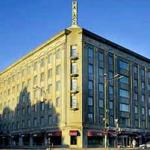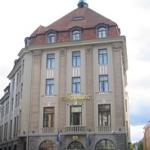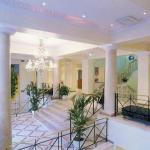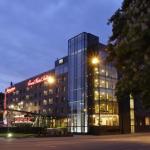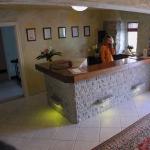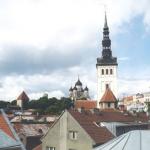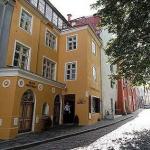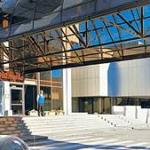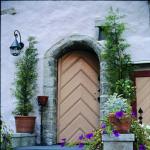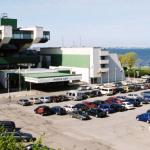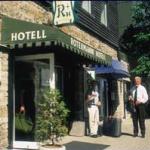Sights Tallinn, Estonia
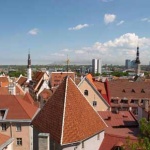 In 1997, the historical part of Tallinn - Old Town - was included in the UNESCO World Heritage List. Of particular significance attaches to the Old Town of Tallinn, above all, its unique medieval architecture and unique spirit of antiquity, which other capital city of Northern Europe in many respects already lost.
In 1997, the historical part of Tallinn - Old Town - was included in the UNESCO World Heritage List. Of particular significance attaches to the Old Town of Tallinn, above all, its unique medieval architecture and unique spirit of antiquity, which other capital city of Northern Europe in many respects already lost.In Tallinn, as in one of the most perfectly preserved medieval cities in Europe, have remained virtually unchanged network of streets and boundaries of plots generated in the period from the XI to XV century.
Thanks to powerful fortifications, the Old Town was able to protect themselves from significant damage during the attacks of the enemy troops. A stone house, which is mostly built, stood in the flames of fire. Bypassed the old town and a new massive building, which, in turn, also helped to preserve its architectural value.
Today, in its original medieval form of retained all the most important administrative and sacred buildings of the Old City, successfully survived the century and many houses, barns, warehouses, once belonged to the noble citizens and merchants.
Start XV - the middle of the XVI century - the golden age of ancient Tallinn: the city belonged to the Hanseatic League and played an important role in the Baltic Sea region. The economic recovery of those times has contributed not only to substantive consolidation city limits, but also created all the prerequisites for active creativity - the creation of architectural and artistic values.
Town Hall Square for centuries been used as a market and fairground, and also served as a gathering place for people.
Square in front of City Hall has long been, even before the construction of the Town Hall itself was used for trade.
The building of the Tallinn Town Hall - the most preserved building of the medieval Town Hall in Northern Europe. The first written mention of the Tallinn's Town Hall dates to 1322 year, and there is every reason to believe that in the distant past, she stood in the same place now. Its present appearance Town acquired as a result of a thorough restructuring in 1402 - 1404 respectively, so that in 2004 it celebrated its 600 anniversary.
Tallinn Town Hall, which held its meetings in the magistrate, was a real heart of the city, as well as representational structure, where for centuries to address the major issues of urban life. First mention of the Tallinn town council meets in literacy Danish King Erik V on May 15, 1248, which enjoins the monarch to consolidate the Tallinn Lübeck law.
Members of the magistrate - Rathmann - have been sitting in the hall on the second floor of City Hall, here today organized festive receptions and concerts, a three-nave hall in the basement of Town Hall is used as a space for exhibitions.
However, the most famous element of the building of the Tallinn Town Hall, built from traditional building materials of the Estonian limestone, was weathervane "Old Toomas, crowning the tower - the current symbol of the capital of Estonia.
Oleviste - the tallest building in medieval Europe. The first mention of this church, built in Gothic style, refer to 1267. The exact time when it was actually built and launched, we know little, however, according to historians, at this point - Commercial court Scandinavian merchants - the church was already in the XII century.
His name Oleviste Church is obliged Norwegian King Olav II Haraldsson. In addition, St. Olaf was venerated as the patron of seafarers.
At the turn of the XVI century Oleviste height reached 159 meters, which allowed her then to be the tallest building in the world. Vzmetnuvshiysya to heaven church spire was visible from afar and serves as an excellent guide for mariners. However, such an impressive height harbored and the serious risk: eight strokes of lightning struck the church, and three times during a storm it covered the devastating fire. By extant data, the fiery glow could be seen even from the Finnish coast.
Formation and the formation of the Primorye region Kadriorg been influenced by the traditions of Russia's royal court and the local nobility. Representative architecture preserved to this day, the historic wooden buildings Kadriorg shows of the past wealth of this part of town.
Walking through the streets of Kadriorg takes us into a kind of architectural museum, where entwined centuries and styles. Beside typical Estonia, inexpensive wooden apartment houses perfectly coexist luxury villas, estates and summer homes in the spirit of functionalism with luxury apartments.
Kadriorg and to this day - one of the most prestigious districts of Tallinn. Here is the residence of the President of the Republic of Estonia, and many embassies. A Kadriorg Park has always been popular among Tallinners as a great place for family entertainment.
Kadriorg known primarily his palace in the Baroque style and park ensemble. Construction Kadriorg Palace, which Peter I was going to use as a summer residence for the royal family, began in 1718.
Orthodox Alexander Nevsky Cathedral is located in the Upper City near the parliament building.
The Dome Cathedral is the oldest church in Estonia. Of particular interest are the tombstones 13-18 centuries and emblems epitaph influential nobles. Here is buried the first Russia circumnavigator IF Krusenstern.
Museum of Rocca al Mare - in Tallinn Open Air Museum put together a wonderful collection of Estonian hamlet architecture.
Baron von Glen Park was founded by an eccentric landowner Nicholas von Glen. The most striking object of this park is the castle von Glen, built in 1886.
Church of St. Nicholas, named after the patron saint of seafarers - St. Nicholas, was built by German merchants in the 18 century.
Historical Museum in the castle Maarjamäe - the castle was the summer residence of Count Orlov-Davydov. Currently, the castle is Estonian History Museum.
Dominican Monastery of St. Catherine - it is the oldest building in the lower Tallinn. At this time the Dominican monastery operates only as a museum.
District Rocca al Mare is situated on the southwestern coast of the Gulf of Copley. On the origin of this picturesque seaside part of town, the steep scarp leading down to the sea, evidenced by its title: Rocca al Mare is translated as "the cliff by the sea." Initially, the so-called old manor, built in 1863 by A. Girardot de Sukantonom. Subsequently, the original name has spread and is situated near the manor, and then the whole district.
Today in the Rocca al Mare is a lot of attractions that merit attention. The area has become a popular shopping centers and leisure facilities are a range of cultural activities.
Estonian Open Air Museum unique old buildings on 79 acres of coastal forest park.
In the museum you can see the hamlet buildings of different times and regions of Estonia, as well as the mill, church, school, tavern, smithy and other buildings associated with the life of the villagers.
Tallinn Zoo - one of the most interesting collections in Scandinavia. In Tallinn Zoo, founded in 1939, you can see more than 5400 representatives of nearly 350 species of fauna.
Luna Park in Rocca al Mare
What can give a child great joy, than an amusement park? In this, the largest in Estonia, an amusement park there will be entertainment for every taste: over 100 video and other exciting games, 18 rides, daily show concern tent and much more.
